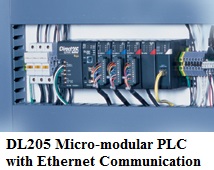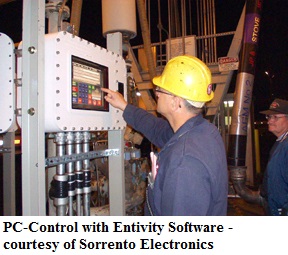Choices and change are the only constants in control system technologies today. Current industrial controller products can no longer be classified by the internal design architecture they possess. More often than not, any type of modern controller uses some portion of Commercial Off The Shelf (COTS) technology in its CPU, operating system, memory, or data storage components.
Previously, the lines that separated Programmable Logic Controllers (PLCs), PC, and custom control systems were easily identified. With the movement toward embracing commercial technology in the heart of controller products, how do control system choices affect OEMs, end users, and the system integrators that serve both? Can choosing between PLCs, PC, and custom control systems make or break a project or an OEM’s new machine design?
Are PLCs Still The One?
In the last five to seven years, smaller PLCs have been introduced with significantly improved capabilities previously found only in larger PLCs. This recent increase in PLC features has been most noticeable in the nano and micro class of controllers, with such features as analog I/O, auto-tune PID, floating point math, motion control, multiple serial ports, and Ethernet and Internet connectivity, as well as several choices of device level networking and remote I/O options. PLC customers benefit greatly from this increased performance. For many applications, a much lower-cost micro or nano PLC will do the job that larger and more expensive PLCs did previously, and they can be installed in a much smaller panel for additional savings. Increased performance and added features in micro and nano PLCs make the amount of local I/O the only significant lacking quality in comparison to larger PLCs.
 Industrial Technologies Solutions (ITS), a systems integrator in Columbus, OH, was faced with a project on a short timeline and with multiple repeat systems required. The application was to retrofit several automatic riveting machines with a more accurate and reliable control system, as well as increase operator diagnostics when compared to the 12-year old original CNC controller. ITS chose the DL205 micro-modular PLC with a D2-260 CPU and an H2-CTRIO high-speed counter pulse/output module, along with a 15-inch EZTouch panel for the operator interface. Brian Engle, ITS Design Engineer says, “The DL205 system provided the necessary motion control interface to the servo drives, along with enough CPU memory to facilitate extensive operator diagnostics and recipe management functions, all at an unbeatable price. We received the complete PLC system in days and were able to install, fully program, and debug the first machine, then deploy the same system and program to additional machines all within our four week time period.”
Industrial Technologies Solutions (ITS), a systems integrator in Columbus, OH, was faced with a project on a short timeline and with multiple repeat systems required. The application was to retrofit several automatic riveting machines with a more accurate and reliable control system, as well as increase operator diagnostics when compared to the 12-year old original CNC controller. ITS chose the DL205 micro-modular PLC with a D2-260 CPU and an H2-CTRIO high-speed counter pulse/output module, along with a 15-inch EZTouch panel for the operator interface. Brian Engle, ITS Design Engineer says, “The DL205 system provided the necessary motion control interface to the servo drives, along with enough CPU memory to facilitate extensive operator diagnostics and recipe management functions, all at an unbeatable price. We received the complete PLC system in days and were able to install, fully program, and debug the first machine, then deploy the same system and program to additional machines all within our four week time period.”
There’s no doubt the days of “control-only” PLCs are numbered. The modern PLC, incorporating many PC capabilities, including Ethernet interfaces and TCP/IP based protocols, multiple serial ports, removable memory cartridges and even integrated LCD screens, has now moved the PLC into the role of “Control and Information Center”. Software is also making significant contributions to the evolution of PLCs with the availability of more intuitive instruction sets, graphical configuration of I/O and networked devices, and extended diagnostics and alarming capabilities, enabling HMIs and other data publishing devices to become more integrated into the PLC architecture. Advancements in small footprint microprocessors and the acceptance of flash ROM memory have allowed the introduction of a new breed of specialty module. These modules, best suited for specific applications such as high-speed counting or motion control, are being designed as low-cost “mini-coprocessors”, capable of executing local logic asynchronous to the PLC CPU scan, yet providing an improved cohesiveness between software and hardware through the benefits of Microsoft Windows-based point-and-click configuration utilities. With all these advancements in PLC computing technology and network connectivity, PLCs should quickly shed the stigma of being a “silent black box”.
PC Control: When The Data Is As Important As The Control
Data handling capability within a control system is one of the top emerging requirements for new industrial control applications. With the economic pressures on manufacturers to be more productive and efficient with less resources and personnel, real-time statistical data is essential for making optimal process or machine adjustment decisions. PC control can often satisfy both the need for fast sophisticated data handling, along with process or sequential functions for control.
Today, PC control can provide almost all the capabilities PLC or Custom Control solutions can, along with additional data handling and extended connectivity into enterprise systems. The strengths of PC control are mainly in the areas of database connectivity, complex math functions, data storage, networked and fieldbus support, and alternate programming choices. Most PC control packages are far superior in exchanging data with SQL and ODBC enterprise systems. This benefits many customers who base their manufacturing scheduling on ERP (Enterprise Resource Planning) applications and who require the control system to respond to data changes in real time. Additionally, PC control systems often have one tag database for all control, HMI, motion, vision, and networked I/O functions, so any changes or additions to the tag database are instantly updated and available for all control system functions. Finally, PC control offers many alternate programming choices beyond the traditional ladder and function blocks for PLCs or the embedded VB, C or assembly language for custom control systems. Flowchart programming is very popular because of the adaptability of common system design flowcharts, which are included in many system proposals to describe sequence of operation and can easily be transferred into the actual control program.
 One example of PC control meeting customer needs is a material handling application by Sorrento Electronics, that loads tanker trucks and rail cars with bulk products such as gasoline, chemicals, asphalt and fertilizer. The system manages transactions, inventory and credit for metered and weighed product at distribution centers worldwide. Sorrento chose PC-based control, using Entivity Studio software combined with DL205 Ethernet I/O, because of the software’s flexibility and I/O networking abilities, as well as the integrated, easy-to-use HMI. According to Ladislao Kalmare, Sorrento’s design engineer, the major benefit of using Studio was its flowchart programming. “Since we develop flowcharts as part of our normal programming process, we had no trouble adopting Studio’s flowchart programming and we didn’t need to take time to translate the flowcharts to a programming language. We chose the DL205 Ethernet I/O hardware because it was the only one that had a high-speed counter module at the time,” says Kalmare.
One example of PC control meeting customer needs is a material handling application by Sorrento Electronics, that loads tanker trucks and rail cars with bulk products such as gasoline, chemicals, asphalt and fertilizer. The system manages transactions, inventory and credit for metered and weighed product at distribution centers worldwide. Sorrento chose PC-based control, using Entivity Studio software combined with DL205 Ethernet I/O, because of the software’s flexibility and I/O networking abilities, as well as the integrated, easy-to-use HMI. According to Ladislao Kalmare, Sorrento’s design engineer, the major benefit of using Studio was its flowchart programming. “Since we develop flowcharts as part of our normal programming process, we had no trouble adopting Studio’s flowchart programming and we didn’t need to take time to translate the flowcharts to a programming language. We chose the DL205 Ethernet I/O hardware because it was the only one that had a high-speed counter module at the time,” says Kalmare.
Although it may appear that PC control is the silver bullet for all control needs, under many circumstances it may come at a slight premium in price. But, if an application meets the requirements for PC control and a PC is already an essential component in the system, the benefits of PC control may also result in a cost savings.
Custom Control: Special Needs For Special Applications
Embedded or custom control designs are still the most popular for industrial control OEM machine applications in terms of the number of unit placements. This is both because the definition of a custom controller is all-encompassing and subjective, and custom controllers are most often used in high volume system applications. The cost benefits of engineering a custom Printed Circuit Board (PBC) with CPU, communications and onboard I/O often are not realized in any application below several hundred units, and sometimes only above several thousand units.
Custom control applications implemented by AutomationDirect customers usually involve a specialized Single Board Controller (SBC) or a custom industrial hardened PC controller with a deterministic operating system running an application developed in C/C++/C# or another high-level language. These systems are often applied to high-speed discrete control applications for material handling or motion control. One of the biggest decisions in developing custom control applications is whether the I/O will be integrated into the SBC design, or whether it will be networked. Several customers have chosen networked I/O for cost reasons in low to medium volume applications. Ethernet is typically used because of its ability to be distributed closer to connected devices, and because of the advanced capabilities available in Ethernet SDK (Software Development Kit) tools, which allow for custom protocols to be easily developed.
What’s Next?
The future of control system choices will continue to be interesting to say the least. Prices will continue to fall, and customers will truly benefit when it comes to selecting best-in-class products that provide interoperability. This should eliminate basing a control system buying decision on one control architecture, or one network protocol available from only one specific vendor, who may have desired features and prices for some products, but deficient features and artificially inflated prices for others. Although many suppliers will be faced with significant market and technology challenges, customer-driven suppliers will find ways to either offer great value-added services and solutions, or low-overhead, best-value products shipped the same day. In the end, the customer is the winner.
Click here for PLC product line overview
Click here for more information on Operator Interfaces
Click here for information on PC Control products
Paul Ruland
AutomationDirect Product Manager
Originally Published: April 1, 2004

